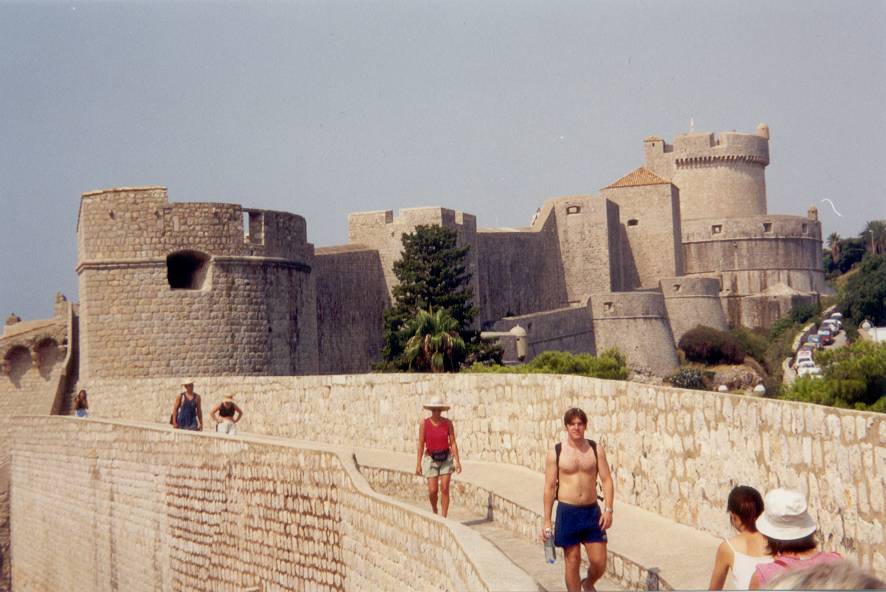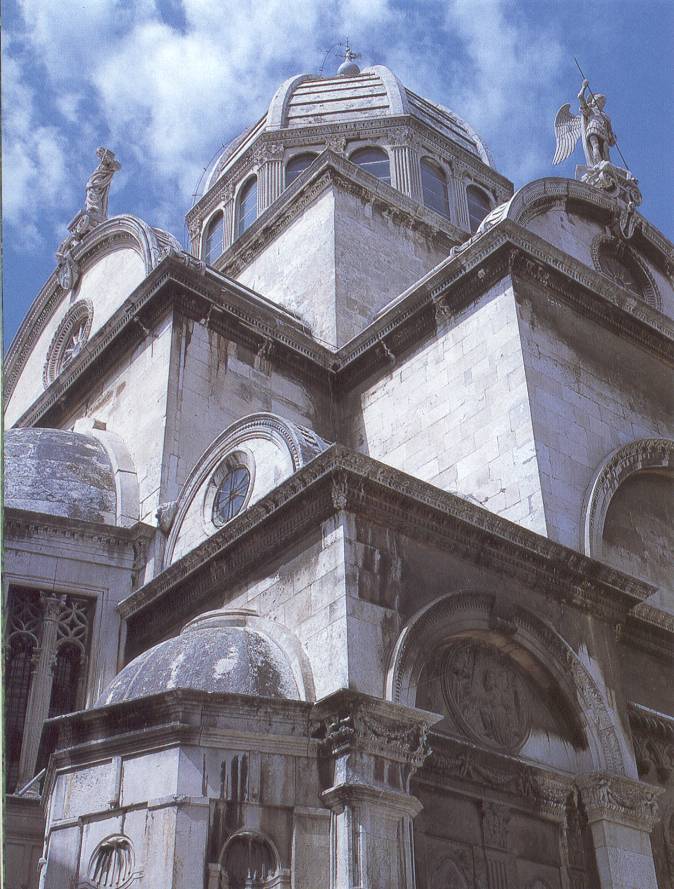

Petar Kresimir IV (1058 - 1074)
Petar Kresimir's ascension to the throne marked the beginning of what is commonly known as Croatia's Golden Age. His international diplomacy, close alliance with the Holy Roman Church, and his predecessor's military reforms led to Petar Kresimir IV becoming one of the most powerful kings of Croatia. In 1061, he achieved international recognition of Croatia's sovereignty over the Eastern Adriatic, thus stymieing Venetian plans to occupy Croatian coastal towns and islands. Pope Alexander II confirmed Croatia's sovereignty when he entitled Petar Kresimir IV as "rex Croatiae et Dalmatiae".
Under Petar Kresimir IV, the Kingdom was organised into 12 counties, governed by a Royal Ban (Regional Governor) and Royal Zupan (District Prefect). Bans and zupans were the highest dignitaries in the Kingdom and came under the direct command of the King. According to local, Papal and Byzantine sources, Croatia's territory encompassed Dalmatia (from Mount Ucka in Istria to Budva in Montenegro and the hinterland); Bosnia (which at that time included the mountainside between the Drina and Bosna Rivers; and Slavonia (including the fertile plains between the Sava, Drava and Danube Rivers).

Minceta Fortress, Dubrovnik
Petar Kresimir IV was extremely generous toward Benedictine monasteries and convents, showering them with endowments throughout his reign. He saw the founding of the Monastery of Sv. Ivan (St. John) in Biograd (1060), a Benedictine Convent in Trogir (1064) and the renowned Convent of Sv. Marija (St. Mary) in Zadar (1066). This last convent still operates today and although seriously damaged during WWII, managed to preserve documents and artworks from Petar Kresimir's reign.
One of Petar Kresimir's most famous donations was that of the island of Maun to the Monastery of Sv. Krsevan (St. Chrysogonus) in Zadar. Documents formalising the donation have been preserved and include the signatures of the King, the Bishop of Zadar, a number of Zupans, judges and court dignitaries. Other donations include the gift of property on the River Jadro to the Monstery of Sv. Stjepan pod Borovima (St. Stephen beneath the Pines) near Split. Also of particular note was the founding of Sv. Petar's (St. Peter's) Monastery on the island of Rab. In 1071, Petar Kresimir donated half the island of Pag to Sv. Petar's (a huge swathe of territory stretching from Lun to Novalja).
Trade and commerce thrived throughout Croatia under Petar Kresimir's rule; from the fertile plains of Slavonia, to the mineral rich mountains of Bosnia, to the wealthy Dalmatian ports. An abundance of gold and precious metals dating from this period, testify to this.
In the early 1060s, Petar Kresimir founded the royal city of Sibenik, in central Dalmatia, which soon grew into a major, fortified port rivalling more established ports throughout the Adriatic region. Today, local residents of Sibenik still fondly refer to their city as Kresimirov Grad, or Kresimir's City.

Cathedral in Sibenik (Kresimirov Grad/Kresimir's city)
Despite his accomplishments and the Kingdom's widespread prosperity, Petar Kresimir's reign did not escape dissension. In 1061 an unknown assailant murdered his brother, Gojslav, and accusations against the King began to surface. So serious were the accusations that Pope Alexander II sent his representative, Mainard, to Croatia to investigate. Petar Kresimir IV affirmed his innocence and took a solemn oath together with 12 zupans who vindicated him. The controversy surrounding his brother's murder was recorded in a codex, which has been preserved by the Treasury of the Cathedral of Korcula. According to the codex, Petar Kresimir IV was found innocent and promptly reaffirmed as king by the Pope.
One of the most powerful Bans (Governors) under Petar Kresimir IV was Dmitar Zvonimir. Zvonimir was appointed Ban of Slavonia in c.1070 and according to some historians ruled the Kingdom concurrently with Petar Kresimir IV, marking a break in tradition and a potential interruption to the succession of the Trpimirovic dynasty (Zvonimir was not a member of the Trpimirovic family). This arrangement lasted until 1074 when Petar Kresimir IV was ambushed whilst at sea by Norman pirates from the Italian Coast. He was taken hostage and never seen again, sparking widespread grieving and a crisis of succession within Croatia. Following a short period of instability, Zvonimir was chosen as King over Stjepan II (the next Trpimirovic due to inherit the throne) and was crowned in Solin amid substantial pomp and ceremony.
Next (Dmitar Zvonimir & Jelena)
Previous (Stjepan I)
Copyright © Karl Baricevic. All rights reserved.